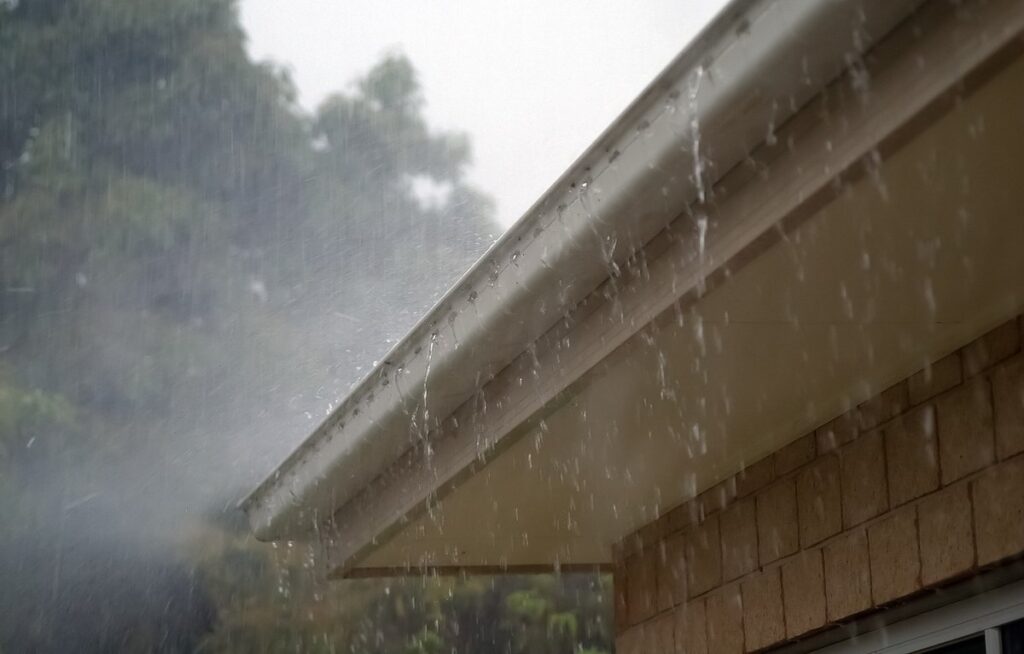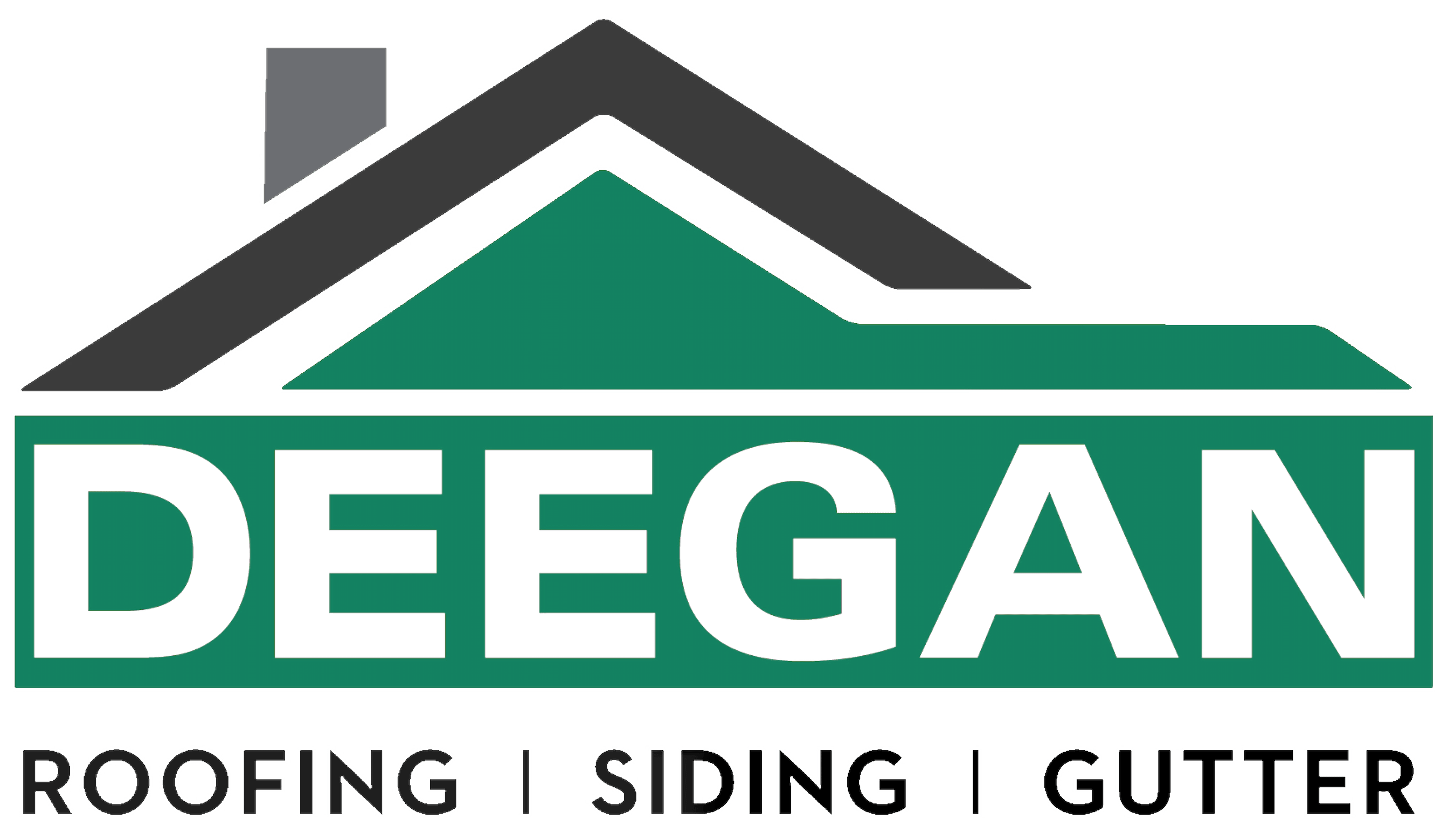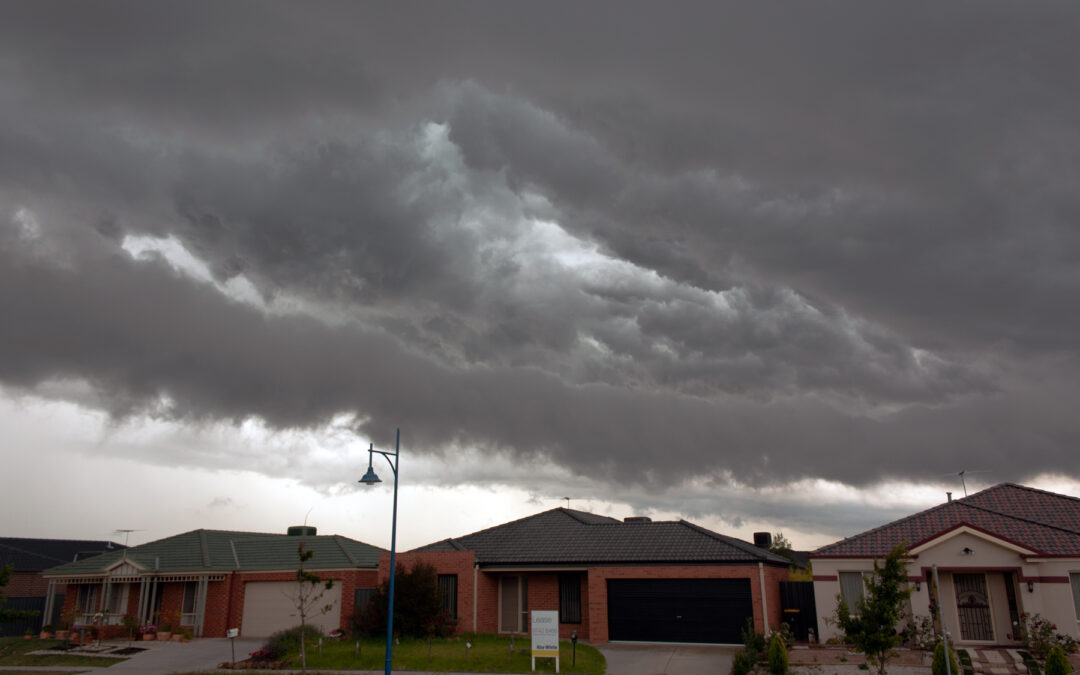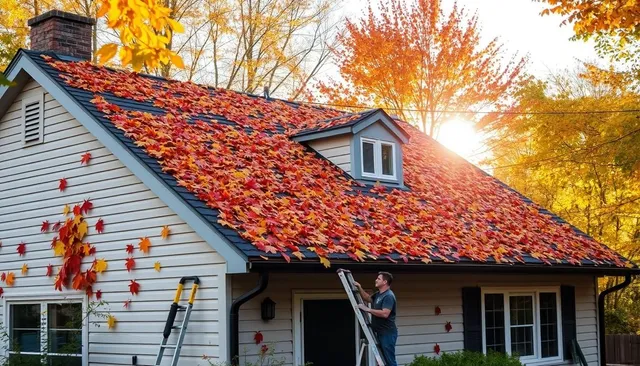As the hot, humid days of summer paint the skies across New Jersey in shades of growing anticipation, so too brings the looming threat of severe summer storms with gusty winds, torrents of rain, and ominous hail. It is during this season that homeowners must be vigilant and take proactive steps to ensure their roofs are protected and prepared. The unpredictable weather patterns—extreme downpours, sudden microbursts, and even occasional tornadoes—have the potential to inflict significant damage if your roofing system is not adequately fortified. The goal of this extensive guide is to equip you with all the knowledge you need to confidently secure your home before the first rumble of thunder, preventing costly repairs, structural issues, and undue stress when storms inevitably arrive.
Staying ahead of weather threats means recognizing that your roof is not just a protective cover, but the first line of defense against summer storm elements, readily absorbing the brunt of nature’s fury. Ensuring it remains in peak condition involves more than a cursory glance—it requires a thoughtful, systematic approach to inspection, maintenance, and reinforcement. From identifying weak spots to boosting drainage performance, this post walks you through every key measure in vivid detail. Even seasoned homeowners will benefit from a fresh perspective and insider tips to enhance your roof’s storm resilience. By the conclusion, you’ll understand how to blend hands-on oversight with professional insight to create a storm-ready roofing system you can rely on.
Recognizing New Jersey’s Unique Summer Storm Challenges
Summer storms in New Jersey are multifaceted events, often spawning a range of weather phenomena that test the limits of residential roofs. Thunderstorms here can be powerful and abrupt, bringing strong, damaging winds capable of lifting shingles, along with heavy rainfall that overwhelms drainage systems and stresses vulnerable areas like valleys and flashing. Hail, though sometimes underestimated, can leave dents in shingles and crack protective granules, weakening your roof’s waterproofing barrier. Tornadoes, hail storms, and microbursts each contribute their share of destructive energy, making timely storm preparation critical. Lightning strikes introduce another risk, potentially causing roof material damage or igniting fires in attic spaces. Understanding these threats in their distinct variety is foundational to ensuring your roof is not just patched but robustly defended.
NJ homeowners also contend with high humidity levels, which behave like silent adversaries, intensifying the degradation of roofing materials from within. Condensation that accumulates in poorly ventilated attic spaces can cause mold growth, wood rot, and shingle warping that may not be obvious until a storm’s stress exposes the weaknesses. These internal vulnerabilities often compound weather-driven damage, meaning that true storm readiness includes both external reinforcement and internal vigilance. By acknowledging the breadth of summer storm challenges—from overflowing gutters to hidden attic deterioration—you position yourself to implement a roof preparation strategy that’s both comprehensive and durable.
The Irreplaceable Value of Pre-Storm Roof Preparation

Putting in the effort to prepare your roof before storms hit isn’t a chore—it’s a wise investment in home protection. Small, manageable maintenance tasks now can prevent full-scale structural compromise later. A proactive homeowner who tidies debris, secures loose shingles, and clears gutters often avoids the cascade of problems that result from even modest storm exposure. By reinforcing vulnerable components early, you’re preserving not only the integrity of your roof but also reducing the likelihood of emergency repairs that disrupt your daily life and budget. Beyond financial considerations, there’s also the invaluable peace of mind that comes from knowing your home is ready for whatever the season may bring. Whether rain or hail arrives in summer’s wake, a thoroughly prepared roof minimizes intrusion, structural stress, and damage escalation—reducing stress and increasing confidence in your shelter when the sky is at its most threatening.
Long-term savings are equally compelling. A small preventative investment can avert major expense down the line. Preventing a leak now is significantly cheaper and less disruptive than repairing mold-affected structures or replacing sagging decking. Even better, continuous roof maintenance prolongs shingle lifespan, reduces energy costs, and contributes to sustained home value. Ultimately, homeowners who treat roof preparation as a matter of necessity rather than optional upkeep position themselves to weather storms with far less hassle, cost, and emotional strain.
Conducting a Thorough Pre-Season Roof Inspection
Embarking on comprehensive roof inspection well before the start of summer storms (ideally in late spring) is your first critical step. Begin with a detailed examination of each roofing component to ensure its ongoing integrity under duress.
Start by carefully inspecting your shingles. Over time, shingles become susceptible to curling edges, cracked surfaces, and loss of protective granules. These signs aren’t just cosmetic—they significantly increase vulnerability to wind uplift and water intrusion. Missing or loose shingles should be reattached or replaced before the storm season begins. Pay special attention to areas that may indicate wear and tear—such as near chimneys, valleys, and ridges—which often show the first signs of deterioration.
Flashing presents another focal point during inspection. Flashing is the thin, protective layer around chimneys, vents, and valleys that guards against water infiltration. If flashing is loose or cracked, even a small gap can permit rainwater to enter the roofing system. In preparation for storms, ensure that flashing is secure and watertight. Re-seal edges with durable, high-quality caulking and check the condition of metal flashing patches for deterioration or rust.
Next, assess gutters and downspouts. Clogged gutters disrupt rainwater flow, leading to overflow that can damage fascia boards, lead to attic water penetration, or saturate vulnerable sections during intense rainfall. Make sure to remove any accumulated debris and ensure that funnels channel water away from your foundation. Also, inspect for bent, rusted, or loose hangers which can fail under the stress of heavy rain.
Don’t neglect the attic. Enter during daylight and inspect the interior roof decking and insulation for signs of water stains, dampness, or mold. These symptoms often suggest leaks that are not visible from outside. Addressing these issues early can prevent outbreaks of wood rot, insulation mold growth, and indoor air quality problems, which often escalate dramatically during summer’s humid weather. Attic health is an essential component of your storm-readiness, ensuring that internal vulnerabilities don’t undermine the structural protection of your home.
Adequate ventilation should be on your checklist as well. Proper airflow helps regulate attic temperature and moisture levels, which slows degradation of roofing materials and prevents structural stress. Blocked soffits, damaged ridge vents, or compromised airflow can accelerate internal damage during storms. Ensure that ventilation remains functional and that attic insulation has not obstructed air channels.
As you walk your roof, note any sagging areas or soft spots that may indicate a compromised deck or structural weakening. These areas may require professional intervention and could worsen quickly under rainfall weight or wind stress. Especially after heavy snowpacks or previous storms, these vulnerabilities need attention to endure summer onslaughts.
Addressing Roof Issues Without Delay
Once your inspection reveals areas of concern, prioritize immediate corrective action. Close any gap quickly to maintain a layer of storm defense.
Start by replacing worn or damaged shingles. Choose shingles that match your current style and are rated for high-wind resistance. Even a missing shingle left unrepaired for one storm can allow water, snow, or debris to damage underlying decking. Use the right nails and sealant to secure replacement shingles properly, and carve out a routine to inspect edges after significant precipitation events.
Repair or reseal flashing next. Use high-quality roofing caulk and patching metal strips at flashing-wide cracks to create durable seams. Make sure to integrate self-adhering flashing tape to bolster leaks between the flashing and shingles. A watertight junction at roof protrusions is your first barrier against moisture during heavy rainfall.
Cleaning and clearing gutters is another essential task. Remove debris from the tops and bottoms of gutters, and check that downspouts direct water at least six feet away from your foundation. Preventing water from pooling near your home at grade level can preserve both your roof’s health and your basement. Consider adding gutter guards to minimize clogs during heavy pollen and leaf fall, increasing time between maintenance appointments.
Attic leaks should be patched using waterproof membranes and underlayments that guard vulnerable spots like valley intersections and triple decking or stack penetrations. A high-quality membrane acts as a buffer against hidden leaks that manifest during sudden rainstorms. Any attic moisture or mold found during your inspection must be remediated to protect structural supports and indoor air quality—a repair worth performing before storms hit, when access might become more dangerous or costly.
By attending to these issues early, you reduce the risk of interior damage, high-priced emergency repairs, and insurance complications. Home inspectors advise homeowners to treat roof maintenance like changing car oil: routine, essential, and far cheaper than fixing engine failure.
Enhancing Roof Durability Through Anchoring and Fasteners
NJ summer storms often feature high wind speeds that can lift roofing materials—especially shingles. Reinforcing your roof against such forces can prevent catastrophic damage.
Begin by re-nailing any loose shingles. Use corrosion-resistant nails positioned about an inch from the shingle tab edge to ensure secure hold. This helps resist uplift forces during gusts. If you have an older roof, consider adding extra fasteners or reinforcing the sheathing with advanced plywood to bolster stability. Ask your roofer about modern reinforcement systems like nail-base adhesives or wind clips designed to secure shingles to the decking firmly.
Focus attention on roof deck-to-wall connections, especially at eaves and rakes. These edges are vulnerable during strong windstorms. Installing hurricane straps at rafters and joists improves resistance when crosswinds or sudden buffeting hit. These metal straps anchor the roof structure to the walls, reducing risk of uplift and detachment. Professional installers can verify structural integrity and retrofitting measures are correctly implemented without compromising building compliance.
Periodic checks on attics during strong storms allow homeowners to detect sounds of shifting sheathing or movement at ridge lines—signs of inadequate anchoring needing reinforcement. It’s a worthwhile investment and often covered under home improvement programs for codes that help withstand extreme wind events regionally.
Waterproofing Critical Roof Junctions
Water infiltration is one of the most insidious consequences of storm damage. You must seal every vulnerable junction before rain arrives.
Inspect and reseal around chimneys, plumbing stacks, and dormers with high-grade, weather-resistant sealant. These areas endure constant exposure and thermal switching, which can render seals brittle over time. Refreshing them annually enhances robustness. For roof valleys, which funnel a lot of rainfall and act as water pathways, apply self-adhering flashing tape underneath shingles to construct a watertight barrier even if overlap fails under storm pressure.
Seal up soffit and fascia gaps where wind-driven rain can enter. Moisture lurking under these edges can impact insulation and degrade wood supports. Use expanding foam sealant in hidden spaces to block water infiltration while still allowing airflow. Be sure to maintain attic ventilation when sealing—you want to keep air moving without letting in moisture. This delicate equilibrium is what differentiates good from exceptional storm readiness.
Gutter & Downspout Maintenance: Your Drainage Lifeline
Every droplet of rainfall that lands on your roof must be directed away safely. Properly functioning gutters and downspouts are essential to this drainage plan. Early summer is ideal for cleaning gutters—removing pollen, seed pods, leaves, and other yard debris. Replace sagging hangers and tighten bolts to maintain structural integrity so gutters don’t collapse during heavy rain. Verify that downspouts divert water at least six feet from your foundation; stagnant water near the house can seep underground and compromise your basement walls.
Adding gutter guards is another smart step, reducing clog frequency and extending time between maintenance visits. These protective screens prevent debris blockages that can hide unseen until the first heavy storm—a dangerous gamble. Also, periodically flush gutters after storms to confirm water continues to flow freely and drainage remains unobstructed. These precautionary steps are fundamental to preventing overflow that could otherwise push moisture into building eaves or saturate landscaping.
Proper drainage isn’t just about roof health. It supports the entire home structure by preventing basement flooding or soil erosion near foundation walls. A well-drained roof system thus safeguards the entire envelope of your home.
Landscape Planning to Mitigate Storm Debris
Your property’s landscaping acts as a first line of defense—or hazard field—during summer storms. Unsecured branches, overhanging limbs, and loose patio equipment can become airborne projectiles under wind gusts.
Begin by trimming tree limbs that overhang or lean precariously onto your roofline. Even small branches can escalate into heavy threats when launched by strong winds during summer storms. Schedule regular pruning checks with a certified arborist, especially before storm season arrives. Also, keep lawn and patio furniture, grills, trash bins, and yard tools secured or stored in a shed or garage. These everyday items can quickly become dangerous missiles.
Gutter guards are again helpful, preventing leaves and sticks from entering runoff pathways. Removing small debris before a storm ensures you avoid roof and gutter damage inflicted less obviously but just as damaging during intense weather events.
A tidied, hazard-conscious yard reduces unplanned emergencies when storms hit. Landscaping and roof readiness together form a holistic approach to protecting your home from all sides.
Boosting Roof Ventilation Ahead of the Season
Summer heat and humidity demand that your roof breathe, allowing moisture and heat to escape. Optimized attic ventilation prevents detrimental moisture accumulation that degrades roof materials from underneath.
Inspect ridge vents, soffit vents, and gable vents for obstructions. Debris buildup, bird nests, and damaged panels can choke airflow, causing humidity and hot air to stagnate. Upgrade attic baffles or vented soffit panels if insulation installations have blocked vent chutes. These tiny updates can decrease attic temperatures and vapor pressures in the summer, directly impacting shingle integrity and roofing system performance.
Proper ventilation also reduces energy costs by helping maintain cooler attic and interior temperatures. It limits warping, cracking, and shrinkage of roofing wood. It prevents ice dams in winter and high humidity in summer—binding seasonal protection to year-round resilience.
Emergency Storm-Proofing As Weather Approaches
When meteorologists issue a severe weather advisory, timing becomes critical. Preemptive actions can mean the difference between a minor inconvenience and a major disaster. Start by sealing loose shingles with roofing cement, bonding them safely in position. Heavy-duty, UV-resistant tarps can temporarily shield compromised areas—secure these with nails or screws equipped with rubber washers to prevent blow-offs.
Clear the yard of light items like patio furniture, barbecue grills, or potted plants, which can rapidly turn dangerous in strong winds. Bring them inside or weigh them down to avoid roof strikes. Reinforce structural elements using roof clips or straps, and anchor scaffolding or soffit materials if they’re loosely attached. While these actions delay emergencies, never compromise your safety. Avoid risky tasks in high winds or electrical storms—call a professional in those cases.
Professional Inspection: What It Delivers and Why You Need It
Hiring a professional roofer once or twice a season delivers expert, systematic analysis and often uncovers overlooked vulnerabilities. Certified roofers can inspect everything from nail pops and sheathing condition to moisture infiltration, structural connections, and code compliance. They may even use drones or infrared tools to detect temperature anomalies that signal hidden water intrusion or insulation flaws.
These professionals can verify the integrity of hurricane straps at edge attachments, ensuring walls and roofs remain connected during windstorms. They can also recommend upgrades that significantly raise a home’s storm resistance rating. Professionals routinely issue detailed reports, which homeowners can use as evidence for insurance claims or future purchase negotiations.
A certified pre-season inspection—scheduled before summer storms—provides confidence, enabling homeowners to address weaknesses, reinforce protective systems, and qualify for better insurance premiums or discounts tied to weatherproofing measures and documented maintenance.
Managing Storm Aftermath with Clarity and Efficiency
Even with advanced preparation, some degree of roof impact may occur after a severe storm. Properly documenting and repairing these issues is vital to maintaining long-term home integrity. Begin by taking clear, timestamped photos of damage areas—focus on missing shingles, dented metal surfaces, or lifted sheathing. Keep track of these records to expedite claims or future reference.
Contact your roofer immediately to schedule an inspection. They will identify structural weak points, hail damage, moisture penetration, and flashing failures. Ask them for an itemized repair estimate and keep all documentation, invoices, and contractor correspondence. Avoid delays in filing insurance claims—most policies have strict time limits following storm events and often require professional estimates for validation.
Post-repair, continue monitoring the roof regularly. Consider investing in a maintenance package with your roofing contractor that includes storm follow-up assessments. This ensures any developing problems are addressed pro-actively, preventing reoccurrence.
Long-Term Roof Care: A Seasonal Rhythm That Works
Roof health isn’t a one-time project—it’s a year-round commitment. To maintain a robust roofing system capable of withstanding summer storms, create a seasonal maintenance calendar. In spring, perform a roof inventory—check for leaks, missing shingles, moisture staining, wear on flashing, and blocked vents—followed by minor repairs. Early summer calls for gutter and downspout upkeep, tree trimming, and fastener tightening. Late summer brings post-storm assessments and attic inspections to catch moisture or interior effects before fall arrives.
In fall, address moss or algae buildup, clean gutters thoroughly, and repair any winter season wear. Maintain records of every maintenance visit, inspection, repair, and claim. This archive supports future insurance claims and helps buyers understand the roof’s structured care history, maintaining home value.
Regular attention ensures sylvan protection throughout the year, reducing the risk of hidden failures and unexpected leaks. Such a maintenance rhythm transforms roof care from reactive repair to proactive stewardship.
Evaluating Cost-Benefit: Preparation vs. Repair
Investment in storm readiness might feel like an expense upfront, but it’s a smart financial decision. Preventing rain-related damage or structural compromises saves thousands in emergency repairs. Energy savings from improved insulation and ventilation compound annually. Many homeowners also enjoy discounts from insurers for documented storm-hardening efforts.
Proper maintenance and repairs help preserve your home’s curb value and marketability. The peace of mind that comes with a fortified roof — able to endure New Jersey’s unpredictable summer storms — is truly priceless. Far better than reckoning with leaks, rot, or degraded shingles after summer storms have passed.
Proactive Monitoring Through Weather Awareness
Preparation begins not only with your roof but also with effective weather monitoring. Modern apps and local alert systems provide timely notifications about wind advisories, thunderstorm watches, and flash flood warnings. Understand your county’s terminology and recommended actions: pay close attention to “Summer Storms” “severe thunderstorm warning,” “wind advisory,” and “flash flood watch.”
Schedule your minor repairs and maintenance to avoid rainy windows. For major reinforcing work, aim for windows of clear weather to ensure attic ventilation and underlayment installation aren’t compromised. Use weather patterns to guide scheduling—spring and early summer are optimal for storm preparedness.
Why Choose Deegan Roofing?
When it comes to preparing your roof for summer storms in New Jersey, choosing the right roofing contractor makes all the difference. At Deegan Roofing, we bring decades of hands-on experience, deep local knowledge of NJ weather patterns, and a strong commitment to craftsmanship. Our team is fully licensed and insured, and we pride ourselves on providing honest assessments—not sales pitches. We understand exactly what it takes to make a roof truly storm-ready, from reinforcing fasteners and upgrading ventilation to expertly sealing vulnerable areas.
Deegan Roofing uses only top-grade materials rated to withstand the extremes of New Jersey’s weather. We stay current with the latest building codes, product advancements, and best practices, so you can trust that your roof is protected with the most effective techniques available. Our dedication to customer service is unmatched—we take the time to explain what your roof needs and why, empowering you with the knowledge to make informed decisions.
When you choose Deegan Roofing, you are not just hiring a contractor—you are gaining a partner in protecting your home. We stand behind our work with strong warranties and a reputation built on trust throughout the communities we serve. Whether you need a pre-storm inspection, targeted repairs, or a complete storm-resilient roofing system, we will deliver results you can rely on year after year. There is no substitute for experience and commitment when it comes to roofing—and that is exactly what Deegan Roofing provides.
Final Takeaway: Protect Today, Weather Tomorrow
Ensuring your roof is storm-ready before summer arrives isn’t just maintenance—it’s home protection at its finest. Through detailed inspections, targeted repairs, professional reinforcement, and year-round care, NJ homeowners can confidently face summer storms. Strengthening your roof before the sky darkens helps prevent structural damage, costly repairs, and interior disasters. With each proactive step, you invest in lasting roof performance, safety, and peace of mind—knowing your largest shelter stands prepared for whatever nature sends its way.
Ready to Storm‑Proof Your Roof?
Deegan Roofing, Northern and Central New Jersey’s trusted roofing specialists, excel in storm preparedness and durable installations. Our certified professionals provide thorough inspections and customized reinforcing plans to ensure every roof withstands summer weather extremes. Whether you need a pre-season check, emergency repairs, or full storm-proof upgrades, Deegan Roofing brings expertise and local dedication to protect your home.
Let us help you proactively mitigate potential storm damage. Book your comprehensive roof inspection and storm-readiness assessment now, before the next severe weather system arrives.
Contact Us Today
📞 Phone: (908) 322-6405
✉️ Email: info@deeganroofing.com
📍 Address: 61 Terrill Rd, Scotch Plains, NJ 07076
🌐 Website: www.deeganroofing.com
🛠️ Serving: New Jersey and surrounding areas
Podcast: Play in new window | Download


